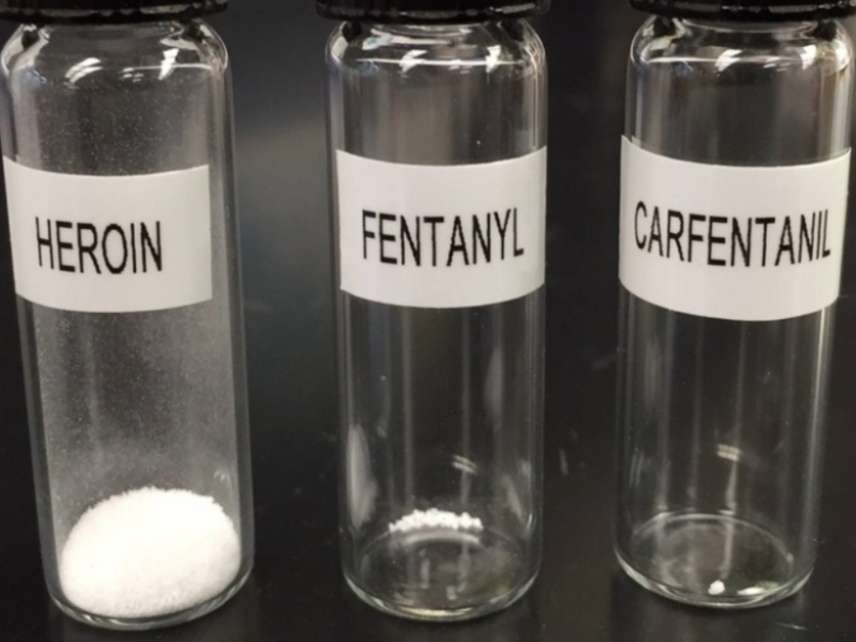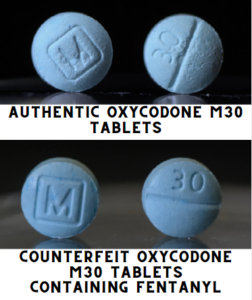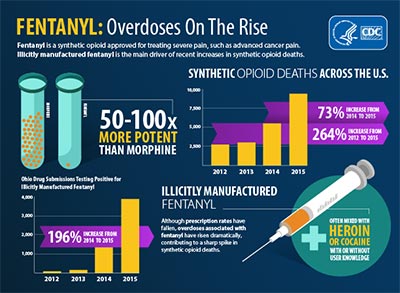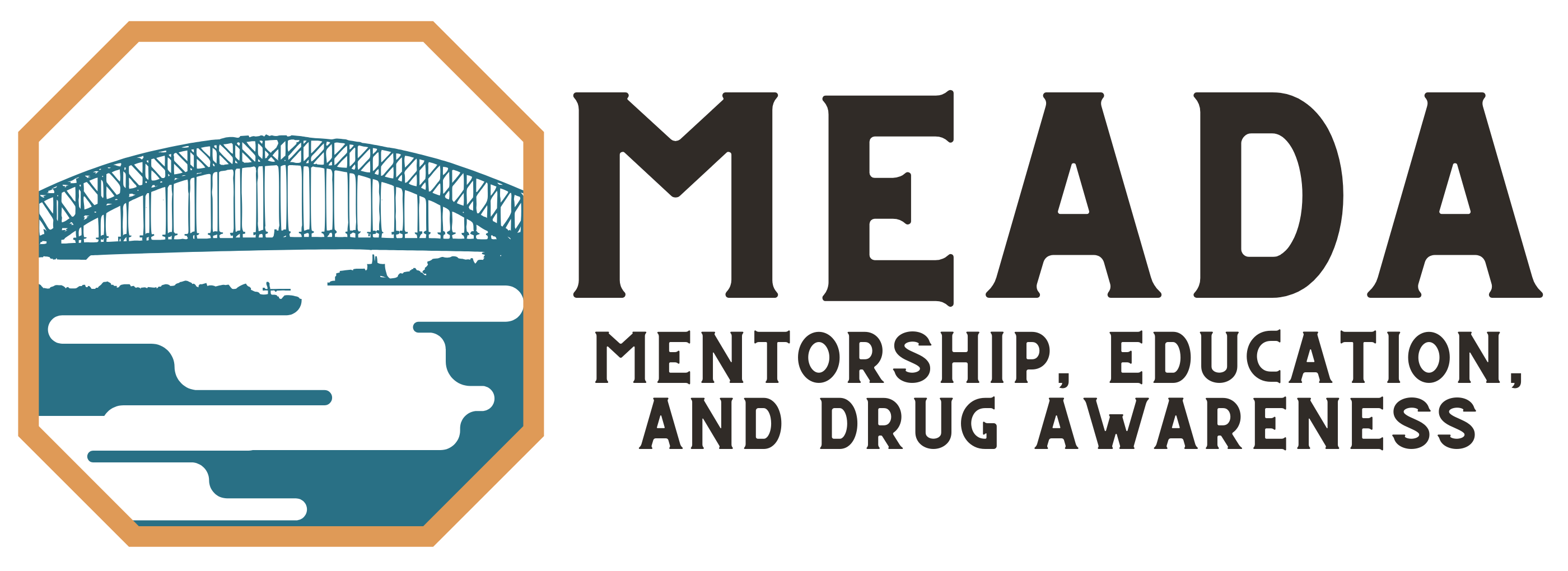FENTANYL
Common Drug Names:
Apache, TNT, tango and cash, goodfella, jackpot, China girl, China white, friend, dance fever, murder 8, percopop, King Ivory, he-man, great bear

Pharmaceutical fentanyl is a synthetic opioid pain reliever, approved for treating severe pain, typically advanced cancer pain. Fentanyl works by blocking pain receptors in the brain and increasing production of the happiness-inducing chemical dopamine. It is 50 to 100 times more potent than morphine and is prescribed in the form of transdermal patches or lozenges and can be diverted for misuse and abuse. Legal brands of Fentanyl may be seen as: Antiq, Duragesic, Sublimaze, Subsys, Abstral.
The image to the left shows the amount of each drug needed to cause the average person to overdose. Carfentanil, classified as a synthetic opioid and used to tranquilize large animals, is 10,000 times more potent than morphine and 100 times more potent than fentanyl. It often takes the form of a white, brown, tan or beige powdery substance.
Illicit fentanyl is on the rise in epidemic proportions. It is extremely dangerous and much more powerful than other drugs. The pills are manufactured to look like legal prescription medication; there is no way to tell how deadly they are by looking at them. Fentanyl is also being added to other street drugs to increase potency and drive addiction. Agencies across the nation are responding to unresponsive subjects, many of them teens who don’t regularly use illicit drugs, that have ingested a pill not prescribed to them.
One of the most common forms, often called “Blues” or “M30s”, is made to look like pharmaceutical-grade oxycodone. They are laced with fentanyl, which can quickly make a person stop breathing. With the availability of these pills, it is very important to remember that any pill not obtained directly from pharmacy may be counterfeit and contain fentanyl.

Like heroin, morphine, and other opioid drugs, fentanyl works by binding to the body's opioid receptors, which are found in areas of the brain that control pain and emotions. After taking opioids many times, the brain adapts to the drug, diminishing its sensitivity, making it hard to feel pleasure from anything besides the drug. When people become addicted, drug seeking, and drug use take over their lives.
Fentanyl's effects include
- extreme happiness
- drowsiness
- nausea
- confusion
- constipation
- sedation
- problems breathing
- unconsciousness
Overdosing from fentanyl:
A person can overdose on fentanyl. An overdose occurs when a drug produces serious adverse effects and life-threatening symptoms. When people overdose on fentanyl, their breathing can slow or stop. This can decrease the amount of oxygen that reaches the brain, a condition called hypoxia. Hypoxia can lead to a coma and permanent brain damage, and even death.
People addicted to fentanyl who stop using it can have severe withdrawal symptoms that begin as early as a few hours after the drug was last taken. These symptoms include:
- muscle and bone pain
- sleep problems
- diarrhea and vomiting
- cold flashes with goose bumps
- uncontrollable leg movements
- severe cravings
These symptoms can be extremely uncomfortable and are the reason many people find it so difficult to stop taking fentanyl. There are medicines being developed to help with the withdrawal process for fentanyl and other opioids.
Although rarely life-threatening, cutting out fentanyl “cold turkey” can be a miserable process. Those struggling with a fentanyl addiction will likely experience painful withdrawals if they stop taking the drug or reduce their dose. Specialized treatment centers offer inpatient and outpatient resources to help those addicted quit fentanyl
SAMHSA's National Helpline - 1-800-662-HELP (4357)
SAMHSA’s National Helpline is a free, confidential, 24/7, 365-day-a-year treatment referral and information service (in English and Spanish) for individuals and families facing mental and/or substance use disorders.
SAMHSA's Behavioral Health Treatment Services Locator
Narcotics Anonymous
Narcotics Anonymous offers recovery from the effects of addiction through working a twelve-step program, including regular attendance at group meetings. The group atmosphere provides help from peers and offers an ongoing support network for addicts who wish to pursue and maintain a drug-free lifestyle. Find an NA meeting near you.
For Providers: Minnesota Alliance of Rural Addiction Treatment Programs
DRUG TRENDS
Because of its powerful opioid properties, Fentanyl is also diverted for abuse. Fentanyl has been added to heroin, or other illicit substances to increase its potency. Many users believe that they are purchasing heroin or other substances and don’t know that they are purchasing fentanyl – which often results in overdose deaths.
Carfentanil, known for a significant spike in synthetic opioid overdose deaths in 2016-2017, is resurfacing in many states, Minnesota being one of them.

